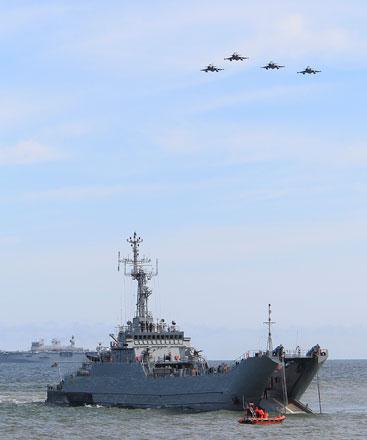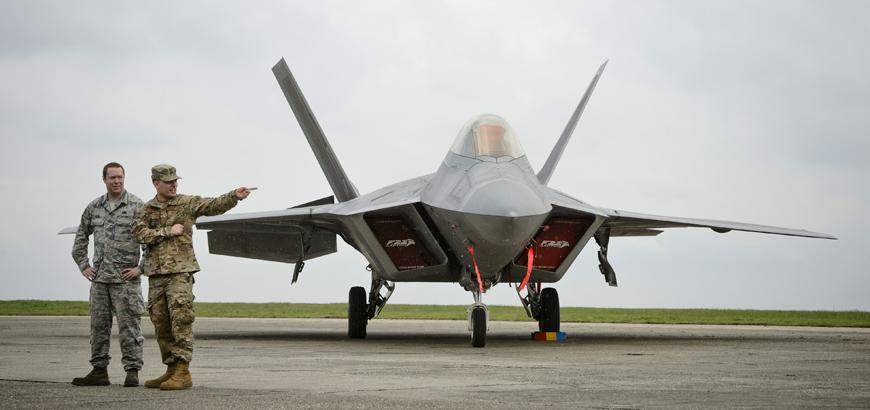You are here
Russia to send new missiles to Baltic exclave on manoeuvres
By AP - Mar 17,2015 - Last updated at Mar 17,2015

MOSCOW — Russia plans to station state-of-the art missiles to its westernmost Baltic exclave and deploy nuclear-capable bombers to Crimea as part of massive war games intended to showcase the nation's resurgent military power amid bitter tensions with the West over Ukraine.
The Iskander missiles will be sent to the Kaliningrad region that borders NATO members Poland and Lithuania as part of ongoing manoeuvres, said a defence ministry official, who spoke on condition of anonymity because he wasn't authorised to comment on the issue publicly.
The exercises range from the Arctic to the Pacific Ocean and involve tens of thousands of troops.
The official also said that the military will deploy long-range, nuclear-capable Tu-22M3 bombers to Crimea, the Black Sea peninsula Russia annexed from Ukraine a year ago.
The defence ministry said in a statement that the Baltic Fleet, the Southern Military District and the Airborne Forces have been brought to the highest stage of combat readiness and have started moving to shooting ranges as part of the drills.
The wide-ranging exercise started Monday, when President Vladimir Putin ordered the Northern Fleet and other military forces on combat alert as part of the exercise in the Arctic. Other units in the Pacific region, southern Siberia and southwestern Russia also launched drills.
The Iskander missiles deployment to the Kaliningrad region reflects Moscow's readiness to raise the ante in response to NATO's moves to deploy its forces closer to the Russian borders.
Poland's Prime Minister Ewa Kopacz interpreted the move as an attempt by Russia to pressure the EU nations as they deliberate possible new sanctions over Ukraine.
"Russia is making this gesture before the European Council meeting," she said. "It is trying to influence European Council decisions concerning extending or adding new sanctions."
The Iskander, which is capable of hitting enemy targets up to 500 kilometres with high precision, can be equipped with a nuclear or a conventional warhead. Deployed to the Kaliningrad region, it could target several NATO member states.
Iskanders already had been sent briefly to the Kaliningrad region during December's military maneuvers, but were pulled back to their home base afterward.
Russia has long threatened to station the Iskanders in the area as part of a response to NATO's US-led missile defence plans. While Moscow hasn't yet announced their permanent deployment, some analysts expect it to make the move amid the rift with the West over the Ukrainian crisis.
US Air Force Gen. Philip Breedlove, NATO's supreme commander in Europe, has termed Russia's "threats to deploy nuclear-capable Iskander-M missiles in Kaliningrad" one of the manifestations of what he called the Kremlin's "pattern of continuing behaviour to coerce its neighbours in Central and Eastern Europe".
The Kremlin, in its turn, has voiced concern about US plans to beef up its military presence near Russian borders. Later this month, US troops are to hold joint exercises with forces from Estonia, Latvia and Lithuania.
Polish Defence Minister Tomasz Siemoniak said Tueday that a battery of US anti-aircraft Patriot missiles is coming to Poland later this month for a major exercise.
He previously said that some 10,000 foreign troops will be taking part in NATO exercises in Poland this year, the highest number ever.
Related Articles
BRUSSELS, Belgium — Sweden’s accession to NATO adds a final puzzle piece to the alliance around the shores of the strategically import
WARSAW — Battleships. Tanks. Helicopters.
MIHAIL KOGALNICEANU AIR BASE, Romania — Two highly advanced US fighters flew to the Black Sea on Monday for the first time since Washington

















